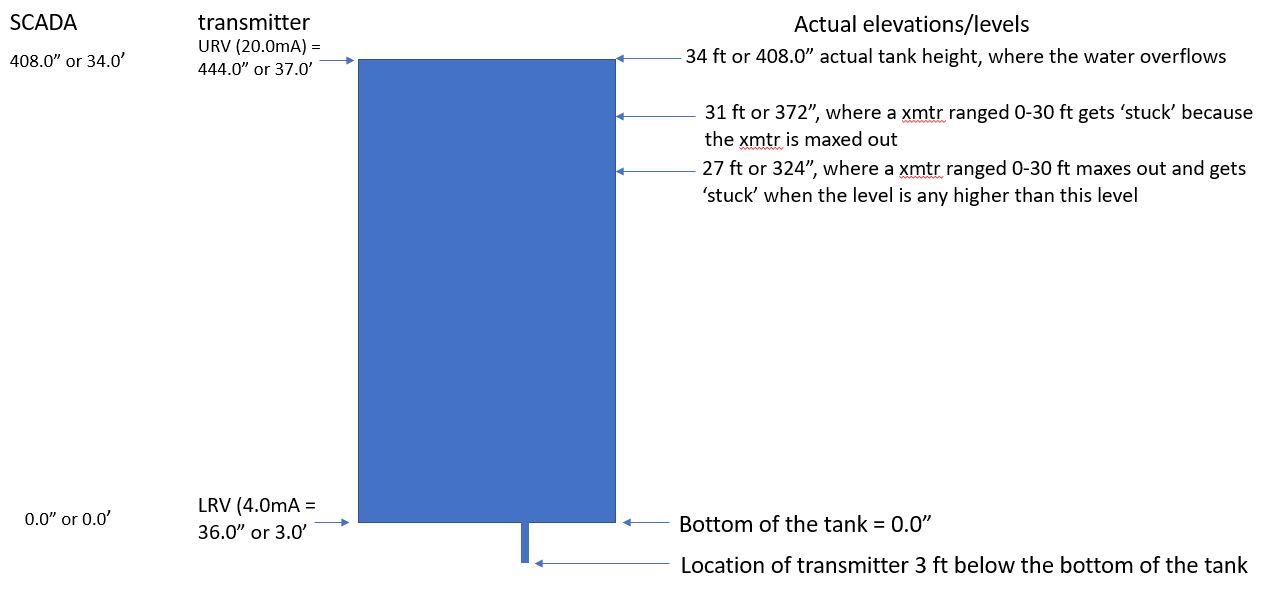The original Rosemount pressure transmitter was configured to give them the 5 million gallon tanks level in inches.
It died so they put in a replacement that was configured to give a pressure reading and we adjusted the scaling in the PLC and SCADA and it was working for a month or so.
They got a new replacement that was to be configured the same as the original that failed from the vender to again read the level in inches.
We put he scaling back and it seemed to be fine but the other day they had a tank overflow and while the readings are live and changing they are stuck around 27' which kind of matched the real level but when it overflowed it was still showing 25-27' so there was no high level alarm.
Today they let out enough water to drop the level by two feet and the historical trend makes it look like nothing happened. The historical trend for the last 8 hours still shows around 27’ or so the whole time. It actually seems to be slowly going up.
Any ideas on a setting in the transmitter that would cause this or did they get bad one?
It died so they put in a replacement that was configured to give a pressure reading and we adjusted the scaling in the PLC and SCADA and it was working for a month or so.
They got a new replacement that was to be configured the same as the original that failed from the vender to again read the level in inches.
We put he scaling back and it seemed to be fine but the other day they had a tank overflow and while the readings are live and changing they are stuck around 27' which kind of matched the real level but when it overflowed it was still showing 25-27' so there was no high level alarm.
Today they let out enough water to drop the level by two feet and the historical trend makes it look like nothing happened. The historical trend for the last 8 hours still shows around 27’ or so the whole time. It actually seems to be slowly going up.
Any ideas on a setting in the transmitter that would cause this or did they get bad one?





